|
Home
|
ToC
| Tasting
Notes
|
Dram-atics |
Whisky & Chocolate |
Collecting
Whisky | Wall
of Friends
|
|
Dram-atics
The whisky world as seen by an eccentric Bavarian exile |
|
|
Please
contact
me here to comment on any Dram-atics article, I'll include as
many replies as possible
|
| |
 |
|
Friday
April
22nd
2011
Two Weddings
and a Whisky
or "A
right Regal affair"
|
|
| |
Prince
William was born on 21st June 1982
and Catherine (Kate) Middleton on 9th January
1982. They met at St. Andrews in 2001 whilst studying History of
Art together.
Keith
was born in July 1959 in Yorkshire and Sabine in February
1958 in Munich. In 1982, when Price William was born,
Keith had just been promoted to an IT shift-leader for one of
the UK's largest supermarket chains and, after some early failed
attempts at golf which you see
opposite, gave up any hope of getting anywhere near St. Andrews,
although Sabine's father is one of Germany's most prominent Art
critics and a university lecturer on the subject. |
|
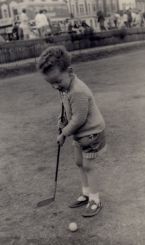 |
|
| |
On 1st September 1998 when Prince
William was just over 16 years old, Keith walked into an office
in Germany to start his new job and uttered those those immortal
words "Hello, I'm new here" to Sabine, the departmental
manager's assistant and, unbelievably to either of them at that
time, his future wife.
During a private holiday in Kenya in November 2010 where
Prince WIlliam flew Kate to the shores of a lake high on Mt.
Kenya, he proposed marriage to her and the engagement was
announced a month later in mid-November.
Keith
never actually proposed to Sabine, but on 28th February of
each leap year that they knew each other, Keith always made a
point of reminding her about the traditional (English) custom
that the 29th February was the one day every four years when a
woman may propose to a man. 2008 was no different and once again
he told her of this
custom which she had forgotten and claimed
she'd never been told about.
To
his absolute surprise, on the morning of 29th February 2008
Sabine looked Keith in the eye and uttered those immortal words
"Will you marry me?" Keith's affirmative reply was forthcoming
and the announcement was made during a private party for family
and friends a couple of weeks later. |
|
| |
On 29th
April 2011,
Prince William and Catherine Middleton will be married in a
cermony at Westminster Abbey which will almost certainly include
a marching band, maybe even a piper or two and various
limousines, although I doubt any 1956 Daimler Conquests will be
included.
In
order to mark this event, The Macallan have decided to issue
a commemmorative bottle of whisky called The Royal Marriage
which itself is a 'marriage' of two casks; both filled on 29th
April, one in 1996 and the other in 1999 and only available in
the UK. |
|
| |
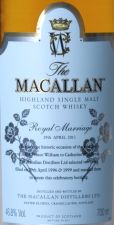 |
|
The
Macallan Royal Marriage, 46.8%,
So, here it is glowing rich amber with a hint of coppery bronze
in my Classic Malt glass. The nose has rich aged oak, a little
furniture polish, figs, plums, dark cherries and oil of orange
with just the slightest hint of cloves. It's also quite floral
in a rich sherry kind of way. The palate is initially rich and
creamy with slightly dry, but quite heavy sherry. Then comes the
wood and fruit followed by that oily orange and hints of dark
chocolate. What I can only describe as floral cloves take the
lead into the finish which is long, again with some development
of orange and a leaning towards finest cognac right at the end. It
is a decent strength at 46.8% and as such, I have no inclination
to add any water to this one. Let's leave it as it is. My
overall impression is one of a very
good whisky, obviously sherry cask(s) but with a floral
lightness and complexity only associated with very good casks. |
|
| |
This whisky is a marriage of two
casks; one from 1996, the other 1999 and, as we all know; any
age statement, if used, has to declare the youngest whisky in
the vatting. This means that this whisky would officially be 11
years old and at a price of 150 GBP which I think is a little
high. Yes, it is a very good whisky, but in reality we're talking
about the collectible market here. One in which Macallan has,
historically, excelled. I have no doubt that this special
commemmorative edition of only 1000 bottles (available only in
the UK and now sold out, damn) will prove over time to be a great investment. Should
you be lucky enough to get hold of one and wish to open it, then
you'll also find it to be a very good whisky.
Meanwhile, I can't help thinking about those dark and secretive
corners of the Macallan warehouses at Easter Elchies which
possibly contain two even more exclusive and superlative casks;
one from February 1958, the other from July 1959 which if given
the appropriate time to marry, would create a whisky of extreme
superlatives. In fact I would consider it to be a marriage made
in heaven and endorsed by the angels!
I guess
Macallan just chose the wrong wedding, although I, sorry we,
wish Prince William and Catherine a long, happy and healthy
lifetime together.
Slàinte
Mhath, Keith & Sabine.
|
|
| |
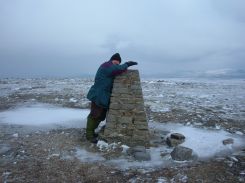 |
|
Tuesday April
19th
2011
The Shackleton
Legacy
or "Conquering
the ice with whisky"
|
|
| |
Throughout the history of mankind
intrepid explorers and adventurers have
strived to push back the boundaries of knowledge and exploration
with unbelievable feats of personal endurance and hardship in
attempts to conquer uncharted territories.
At no
time was this greater than the early part of the 20th
Century when attention was focused on the southern extremities
of our planet by names like Scott, Amundsen and Shackleton.
In
1902 Scott, Dr. Edward Wilson and Ernest Shackleton used
sledges and dog teams in an attempt to be the first to reach the
South Pole. They managed to reach 82° 16.5`S
before illness (scurvy
& frostbite) forced them to abandon the expedition and return.
In
1907 Shackleton returned to the region in a further attempt
to reach the South Pole with the aid of ponies to trek along the
Great Beardmore Glacier. He set a new record at that time by
reaching 88° 23´S but again had to abandon the expedition and
turn back. In doing this he earned the admiration and respect of
many generations of explorers as he chose the safety of his
fellow explorers over the ultimate goal of his journey, just 97
miles from that goal!
In
1911 Roald Amundsen set out ostensibly for the North Pole
but shocked the world and also Scott when he announced that
he
was heading for the South, not North, Pole. The race was on!
Scott
was already part way into his own attempt to reach the South
Pole at that time and he finally reached it on January 17th 1912
only to be disappointed by the discovery that a very efficient
attempt by Amundsen had beaten him by a month. Scott's team
sadly died on the return leg of that expedition.
Not
to be outdone by being beaten to the Pole by Amundsen and
Scott, Shackleton decided to attempt the first transcontinental
crossing of Antarctica in 1914. Two ships were used; The
Endurance and Aurora, with Aurora sailing to The Ross Sea to lay
depots of supplies en route to the Pole. Endurance sailed to the
opposite side to The Weddell Sea to drop a team with dogs who
would aim for The Pole. Sadly, The Endurance became frozen in
pack ice and eventually sank, stranding the men who then endured
an epic struggle for survival, but all were indeed rescued.
This
transcontinental expedition was finally achieved in 1957-8 by
Sir Vivian Fuchs and Sir Edmund Hillary who succeeded with the
use of motorised vehicles.
Shackleton discovered an affinity for public speaking and
joined the lecture circuit but eventually tired of this
lifestyle and desired one more expedition. He formulated plans
for a trip involving the Beaufort Sea and Arctic but these plans
fell through and he once again decided to aim South on what he
described as an "Oceanographic and Sub-Antarctic Expedition",
although the precise goals of this expedition were always vague
and unclear. Shackleton, during the previous years, had suffered
from ill health and various suspected heart attacks, including
one in Rio de Janeiro en route to The Antarctic, but he refused
medical help and continued south, arriving at South Georgia on
January 4th 1922. On the next day Shackleton visited his
Physician complaining of back pains and discomfort and at 2.50
am on 5th January 1922 he suffered a fatal heart attack.
Shackleton's legacy now lives on or is rediscovered in the form
of a case of whisky which was discovered buried in the ice at
his camp hut used for his Antarctic expediton(s) and, after a
period of almost four years, some of this whisky returned to
Scotland to be analysed and reproduced. That whisky bore the
name of "Mackinlay" a company taken over long ago by Whyte &
MacKay so it's no surpirse that they assigned their top 'Nose'
and Master Blender Richard Paterson the task of this
reproduction.
I now
present to you that replica; Shackleton's Whisky:
|
|
| |
 |
|
Mackinlay's rare Old Highland Malt Whisky (The Shackleton
Replica) 47.3% abv
The nose is surprisingly fresh and light with some initial
citrus (faint lime and pineapple) and ever so slightly farmy
elements including aromatic hay and grasses. After 2-3 minutes
more fruit develops in a very warming way which includes pear,
melon and apple, but all wrapped in hay and grasses. The palate
is creamy smooth with a delayed light pepperiness which is soon
followed by slightly bitter star-fruit then hay, apricot and
creme brulée. This has an extremely creamy mouth-feel. The
finish is very long and fruity with some peppercorn. A very
unusual, but quite delightful whisky. |
|
| |
So, four
years after the initial discovery
and some hundred or so years after being taken to Antarctica,
Shackleton's stash of Mackinlay's Highland Whisky finally
returns to Scotland for expert analysis and, as it turns out, a
pretty good reproduction. Fellow Malt Maniac Dave Broom is the
only other person apart from Richard Paterson to have tasted the
original and he is quoted as saying the replica is a very good
reproduction of it.
Personally, I can't speak for the original, but I can say that
this reproduction is in its own right a very good whisky. It is
one of the most unusual I have tasted; that creamy smoothness is
sublime along with the creme brulée effect, but at the same time
it exhibits light, fresh and fruity characteristics which are
quite unique.
Well
done and thank you to Richard and Whyte & MacKay for recreating
this gem.
|
|
| |
 |
|
Sunday April
17th
2011
Golden Oldies
or "They
don't make them like that any more"
|
|
| |
"They
don't make them like they used to"
is a much-proffered phrase in
many walks of life, but it is very often used in the world of
whisky.
Today
I have the pleasure of trying five drams from the 70's &
80's but not as you may think. Two of them were distilled in the
1980's and released in recent times as 28y offerings, but the
other three were distilled during those periods and also
released decades ago.
What
am I talking about? Well, there's an Aultmore 28y & Tomatin
28y but then two 'old' Aberlour releases, or rather younger
Aberlour releases of 8y & 12y in those funny square
bottles
from the 70's - 80's and then the
long-discontinued but hardly forgotten Edradour Ceramic bottling,
or was it called a decantering or even a juggering?
Ahh
yes, the 70's; I remember them well as a teenager learning
to drive and also, somewhere in the darkest recesses of my mind
are memories of Glenmorangie and Glenfiddich tasting nothing
like they do today as my own personal whisky journey was in its
infancy.
|
|
| |
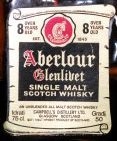 |
|
Aberlour, 8y, old square bottle, Gradi 50;
I often see these old Aberlour
square bottles available from specialist collectors' sites but
this is my first chance to actually try one. The nose is a
combination of aged oak and light floral or even perfumed notes,
along with something just very slightly farmy. The palate is
filled with delightful dark fruits (currants, figs, plums) but
it also has some great hints of mocca and orange leading into
the finish which is long and also slightly spicy.
Sadly,
they really don't make them like this any more! |
|
| |
Aberlour, 12y, old square bottle, Pure Malt,
40%; This 12 variant is even more
aromatic and perfumed with a nose which again includes aged oak,
but that perfume ... delightful! Will someone bottle it? Ahh,
they did. Eventually a suggestion of butterscotch and candy
floss develops. The palate is smooth and sweet with wood, candy
floss, toffee and just a hint of water melon. The finish is long
with wood and melon.
Delightful Golden Oldie, they really don't make them like this
any more. |
|
 |
|
| |
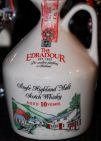 |
|
Edradour,
10y, ceramic jug;
Lots of character in this one
with freshly-polished aged oak alongside malty butterscotch and
creamy toffee. After some minutes an aroma of sweet wood
develops and then turns into something almost medicinal. The
palate is smooth and round with everything the nose promised
plus a hint of black pepper leading into the finish which is
long and fruity too.
Extremely civilised, they just don't make them like this any
more. |
|
| |
Aultmore 28y, Bladnoch Forum, 53.5%;
A cocktail of aromatic and lightly perfumed
herbs, sweet liquorice root, almonds and a touch of coconut
greet the nose, whilst the palate is smooth and slightly peppery
at the same time and after a couple of minutes that coconut from
the nose makes an appearance. The finish is long and sweet,
again with a hint of coconut.
Wow,
they do make them, or at least bottle them like this these days! |
|
 |
|
| |
 |
|
Tomatin
28y, Scotch Single Malt Circle,
55.3%; A rich nose with dark
fruits (mainly plums, figs & dark cherries) is extremely
aromatic, sweet and ever so slightly perfumed. The palate is
also rich with a creamy mouth-feel and offers wood, slight
pepper, dark cherries and hints of amaretto. The finish is
extremely long with that amaretto and the dark cherries.
A very 'big'
whisky which, thankfully, they do still bottle these days! |
|
| |
Once
again I have to say a big thank-you
to the organisors and exhibitors at the recent Munich whisky
festival for bringing these whiskies along and giving me the
chance to pick up these five excellent drams. It really isn't
every day that one gets a chance to try 8y, 10y and 12y whiskies
from something like 30 years ago and revel in 'how whisky used
to taste'. No, they really don't make them like that any more!
As
for the two more recent offerings; The Aultmore and Tomatin
are truly superb whiskies and, thankfully, prove that the art of
making whisky is indeed not lost in a time capsule of a few
decades ago. Although I do wonder what the whisky writers of 30
years time will say of the spirit being filled into casks today.
Perhaps something along the lines of "they really don't
make them like that any more"?
Slàinte
Mhath
|
|
| |
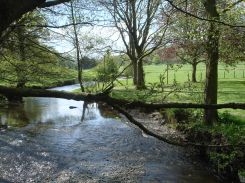 |
|
Sunday
April
3rd 2011
Dee, Spey, Tweed, Tay &
Nidd?
or "Cry
me a River"
|
|
| |
About
three to four weeks ago I received a set of the four Dalmore
river samples; Dee, Spey, Tweed & Tay as Dalmore have decided to
support the foundations caring for these four great Scottish
Salmon-fishing rivers.
I
applaud Dalmore's further commitment to Scotland, its heritage
and its environment, but at the same time I am quite saddened by
the impossibility of my situation here in Germany.
When one
thinks of salmon fishing, one automatically conjures up images
of rural tranquility and the art, yes it is an art, of fly
fishing and trying to tempt those large specimens to enter into
a fight with artist, rod and line.
Personally, I never mastered the art of fly fishing, but I did
master the skills required for coarse fishing in the rivers
around my native Yorkshire, thanks to the great teacher that my
father was. But not only my father, as I shall recall here.
Without
any doubt my favourite river was the river Nidd, specifically
around the small village, as it was thirty five
years ago, of Kirk
Hammerton. There were two adjoining stretches of the river; one
called The Mill, the other The Railway and as you may guess they
were named after the buildings or facilities at the approach to
each.
I'll not
bore you by elaborating further on the full geographical
details, but I will describe why I loved these stretches so
much; the coarse fish to be found here were primarily roach,
dace, perch, pike and if you found the right spots, some
magnificent chub and
barbel. The mill stretch had some superb spots, or 'pegs' in
match-fishing terminology, some of which were around what we
called "The Horseshoe Bend" which was lined with willow trees on
the opposite bank. Get the line just right, feed to perfection
and you were guaranteed plenty of fun with some magnificent chub
and barbel. But that's nothing compared to one particular 'peg'
on the Railway length, known as "The Stumps". At this point the
river Nidd narrowed and flowed a little faster with a normal (unflooded)
depth of around 4ft. About a third of the way into the
river from the opposite bank was a row of wooden stumps or old
fence posts sticking out of the surface, but just upstream from
these was a large bush growing out of the river. Most people
would fish this peg not with float, but with a heavy weight on
the line to hold the bait on the bottom under the bush.
But I
soon learned this is not the real
way to do it.
I'll
never forget one particular Sunday when my father and I entered
an 'open' match here. I was drawn at a peg about 10 minutes walk
upstream from "The Stumps" at a spot renowned for not being very
exciting, so during the day I walked down to "The Stumps" to see
what was happening and found a rather famous fisherman (who
was part of team England, if not the captain) of that time had
drawn that spot. As a shy sixteen year old I asked if I may just
sit behind him on the bank and watch. Oh boy, was I delighted he
said "Yes".
What I
witnessed was a masterclass in the art of coarse fishing where
he managed to avoid the snags, stumps and other hidden obstacles
in the river whilst running his line right alongside the stumps.
When his line reached another willow tree at the bottom of this
run he invariably had a bite, about a third of which he managed
to land and which were all chub or barbel in a weight range of
4-10 lbs.
I never
forgot, nor will I ever forget that day when I witnessed a true
professional demolish the rest of the field (or river) and walk
away with a substantial cash prize.
Now
let's fast forward a few months, maybe as much as a year to the
day that our own fishing club held a match at that stretch of
water. Again I had the misfortune to draw a not too exciting peg
and although I was catching a few fish, I knew that I had no
hope of winning any of the day's prizes, so I walked down to "The
Stumps" to see what was happening. A good family friend had drawn
this peg but he was a pensioner and was fishing the easier way
with heavy weight holding behing the bush. He did well and at
the end weighed in around 8lbs of fish.
When the
match ended it took about 30-45 minutes for the weigh-in to
reach The Stumps and during this time I had a go at fishing the
spot myself, of course with permission of the match officials
who agreed to weigh anything I caught, but obviously without it
counting in the match.
To cut a
long story short the chub abd barbel were there, they were
hungry and after losing a few floats and hooks on those infamous
obstacles I found the right line to them. In less than 45
minutes I caught more fish than the match winner had all day and
at the same time, had more fun and felt more pride and
accomplishment than any time before or since, regarding fishing.
In fact so absorbed was I that it wasn't until I had finished
that I realised I now had an audience sitting behind me in awe
of what they were witnessing from this shy teenager.
Yes I
revisited that spot many times and had similar successes.
No,
this isn't another story of the one that got away, it's a story
of someone doing what they love and doing it well, with the ones
that didn't get away!
But why
do I say I am so sad?
Fishing
exists in Germany, but not so much as a sport like in England.
It is also governed with that typical German efficiency that
says in order to get a licence one has to attend fishing night
school, at a total probable cost of around €2000. When school
has been completed and all exams passed, the 'lucky' fisherman
is then assigned a spot or small area where he (or she) may fish.
This is more about fishing for food than for sport where the
fish live to fight another day and there is nothing along the
lines of Kirk Hammerton and the river Nidd,
with its Horseshoe
bend and Stumps in sight here in Bayern, so sadly all my fishing
tackle sits in its protective covers in my celler as I long for
just another chance with those chub and barbel in my beloved
river Nidd.
So,
thanks Dalmore, you've managed to re-awaken one of my long-lost
loves and one of the very few things I miss by being here
in
Germany, but at least I have you to thank for four whisky
samples which I hope will live up to my fishing expectations,
let's see shall we?
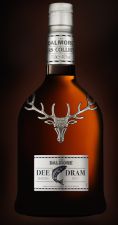
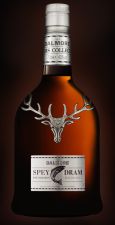
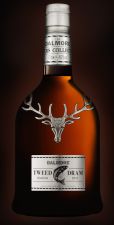
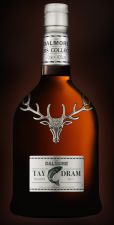
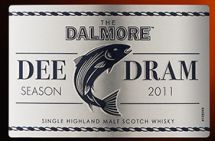 |
|
The Dalmore Dee Dram, Season 2011
Served
in my classic malt glass this has a glowing light amber
colour with a hint of copper. The nose offers some lovely
hints of oil of orange over various dark fruits including
plums, figs and possibly currants, whilst the background
seems to comprise a slightly sweet maltiness. |
The
palate is rich and smooth with those dark fruits and oil of
orange coming to the fore, although that maltiness is also in
evidence, albeit slightly more bitter than it was on the nose. I
then detect something akin to cherries (possibly dark ones)
leading into the quite long and smooth finish.
Overall Impression; This Dee Dram has a certain after-dinner
elegance which would certainly befit a Regency Gentlemens' Club
lounge after a hard days fishing.
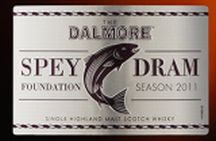 |
|
The Dalmore Spey Dram, Season 2011
Once
again my classic malt glass offers home to another Dalmore
and this time it has a lovely rich amber colour. The nose
has cloves, spicy wood and even a suggestion of
freshly-rising wholemeal bread dough with a lime twist right
at the end. |
The palate doesn't quite deliver the
spiciness of the nose as it is very smooth and lingering with
dark fruits that clearly suggest red cherries and a hint of
something tropical; possibly papaya. Also in there is a
suggestion of marzipan or even walnut, in fact it has a
creaminess which could even be Tiramisu as hints of cocoa
develop into the quite long finish.
Overall Impression; The Spey is also an
after-dinner experience, but this time it's more creamy dessert
than Regency lounge and tales of the one that got away.
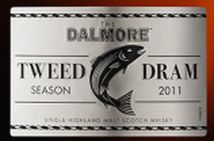 |
|
The Dalmore Tweed Dram, Season
2011
A
rich, dark gold presence graces my classic malt glass but
surprisingly the nose is rather subdued, faint even! After
giving this some minutes to develop I find a light
rubberiness develops over fresh herbs and a suggestion of
aromatic wood. The rubberiness fades to leave a rather
pleasantly fresh & sweet nose. |
The palate is smooth whilst at
the same time slightly dry and spicy. It certainly has cloves,
albeit very light and plenty of herbal influences alongside
blood orange. The finish is very long, slightly dry and quite
repetitive with that orange influence.
Overall Impression; A quite
different Dalmore which is more 'hip flask on the river bank'.
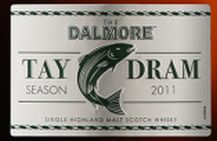 |
|
The Dalmore Tay Dram, Season 2011
This
possibly has my favourite colour of the four with a bright
dark gold bordering on sunny amber. The nose is again quite
light but also quite different with notes of toffee which
soon turn into those toasted coconut macaroons and then
again into aromatic wood and lemon groves on the banks of a
large sea or lake. |
The palate is initially quite leafy
but this soon develops into fruit with some of the citrus of
those lemon groves, but retaining the freshness of the lakeside.
There's also a toasted nuttiness which leads into the long
finish.
Overall Impression; Another very different
but also good dram here. Where the others were relaxing after
dinner or hip flask on the river bank, this one is a main course
of roast beef and Yorkshire pudding, so to speak.
My
eternal thanks go out once more to Dalmore, not for making me
sad about not being able to enjoy one of my lifelong hobbies,
but for reminding me of the great times I previously enjoyed
with that hobby and for four rather decent drams too. Can I
choose one above the rest? In this case not really, all are good
whiskies. I love the nose of the Tweed and the palate of the Tay,
but then the Tiramisu effect of the Spey was most surprising, as
was the elegance of the Dee.
Now come
on Richard, what can you do for me with the Nidd?
Scotch
Cyclist wrote:
Just a
quick message to say just how much I loved reading your latest post.
If I weren't already chronically short of funds and up to my
eyeballs in neglected hobbies as it was you may just have made a
fisherman out of me!
It is one of the many things that makes you a superb whisky
writer: you go beyond the whisky! What could have been a
straightforward taste comparison was instead book-ended by your
personal experience which in turn enriched the tasting notes. It
was what made it a whisky review on Whisky Emporium, and not
another outfit. Well done for continuing to establish a blogging
identity and for finding another angle from which to approach
these four drams. Oh, and you're a lucky so-and-so for having
them sent your way! The Dalmore is one of those distilleries
whose new releases are guaranteed to get me in a lather.
Keep up the good work, and best wishes.
|
|
|
| |
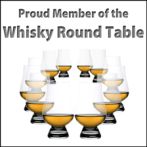 |
|
Sunday
April
3rd
2011
The
Whisky Knights adjourn to maison Gal
this month as we visit WhiskyIsrael
to discuss single casks.
|
|
|
Month |
Previous major
features |
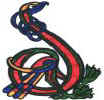  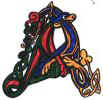 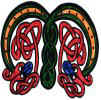  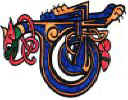   
© Copyright
2009-2011 by Keith Wood - All rights reserved - Whisky-Emporium |
 |

